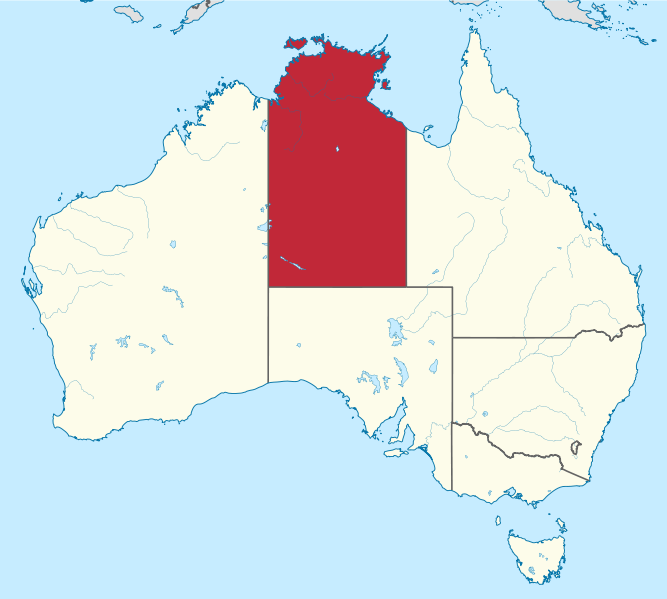Image: Wikipedia
This innovation and the creativity that underpins it is essential to the new clever and clean industries in the knowledge economy of the future, with its core of creative industries and its links to our cultural landscape.
Culture and creative industries are pivotal to jobs and to income. For Indigenous communities in particular one of the most important economic resources they possess is their culture. It may not be mining but it mines a far richer seam in the long term – authentic and rich content that has already been recognised internationally for its high value, just like our iron and coal.
But how does government help cultural diversity grow – or not – through its support for culture?
Instead of seeing the investment value of arts and culture, from its very first budget in 2014-15, the current Government has introduced a series of measures that will have a severe impact long into the future.
In the 2014-15 budget there were a suite of cuts, far wider than culture but of great importance for it, which combined and continued over several years will have a compounding effect far more damaging than first appears. These included cuts to government departments and agencies, practiced by previous governments as well, such as ‘efficiency dividends’ and a pause to indexation of program funding, which freezes funding so it no longer increases to reflect inflation.
One budget line ‘Arts programmes – reduced funding’ predicted stripping out $4.4 million in 2014-15, rising to $5 million, then $9.8 million in subsequent years and then for 2017-18 was listed as a massive $14.6 million. This budget line includes the relatively small number of programs managed directly by the Ministry for the Arts, rather than its agencies.
This was further reduced at the time of the Government’s second budget in 2015-16, when it removed $13 million over four years from arts and culture programs run by Screen Australia, the Australia Council and the Ministry for the Arts. This included $2.2 million from the arts programs of the Ministry. Amongst these arts programs are the Indigenous cultural programs.
The Indigenous cultural programs, supporting languages, culture and arts play a critical role in support for both Indigenous communities and for a diverse and dynamic Australian culture. A network of community-based Indigenous arts centres and an array of cultural activity across Australia have been fostered by these programs. They have often provided the only positive balance to a focus on deficit models of Indigenous capability supported by both major parties.
It is difficult to assess how current funding of these programs compares to previous levels, because, often quite sensibly, they have been rolled together. What is clear is that these programs have been affected by the range of cuts as part of the search for savings since the Coalition Government took office.
Cuts have affected both departmental funds, for staff who work on programs, and program grant funding itself. At the latest Senate Estimates, the Ministry for the Arts noted that staff levels had fallen to 109 from 180 in 2010, reflecting substantial cuts in departmental funds. Many of these have come from the regional Indigenous network.
Since then, even though the search for savings seems to have slowed, the impact of these cuts will continue, compounding over time. The risk is that these measures cut programs without stopping them outright. Instead they peter out slowly over a number of years, by which time it will be too late.
Where can Indigenous cultural organisation turn? There is the bucket of Indigenous funding through the Prime Minister’s Department, the Indigenous Advancement Strategy, but this funds all things Indigenous and culture would be a minnow in a giant pond.
There is funding from states and territories, unreliable where it exists and usually only a sideline.
The most worrying option is the Australia Council. Funding for organisations like Indigenous arts centres has come from the Ministry. With the Australia Council severely affected by funding reductions itself, another large group seeking funding would overload it.
This will hit Indigenous organisations hard because they rely on small amounts of funding from year to year merely to continue their base operation and many have been supported this way for decades, with no increases for inflation or growth in demand. They have used government funding to attract much broader support, driving the government dollar further. Funding community organisations for services government would otherwise have to provide is a great way to get things on the cheap. If you don’t fund them at all, it’s even cheaper.
Stephen Cassidy
Stephen Cassidy is a cultural researcher, writer and commentator who has worked across the Australian cultural sector for over 35 years. This has spanned policy, programs and research in government, museums, publishing and community radio and community arts in four states and territories at national, state and local level. It has encompassed creative industries – including contemporary music and literature – Indigenous culture and languages and intangible cultural heritage. He was Director of the National Cultural Policy Task Force, wrote the proposal that initiated the Digital Content Industry Action Agenda, drafted the Indigenous Contemporary Music Action Plan and played an instrumental role in the adoption of Australia’s first National Indigenous Languages Policy. He has been a Community Arts Officer in local government, Arts Officer for the ACTU, Development Manager at community radio 2SER-FM and Membership Manager for the Powerhouse Museum. Has has a Master of Arts degree, is an Adjunct at the University of Canberra and is a member of the Management Committee of Craft ACT. He blogs at indefinite article and is on Twitter.







